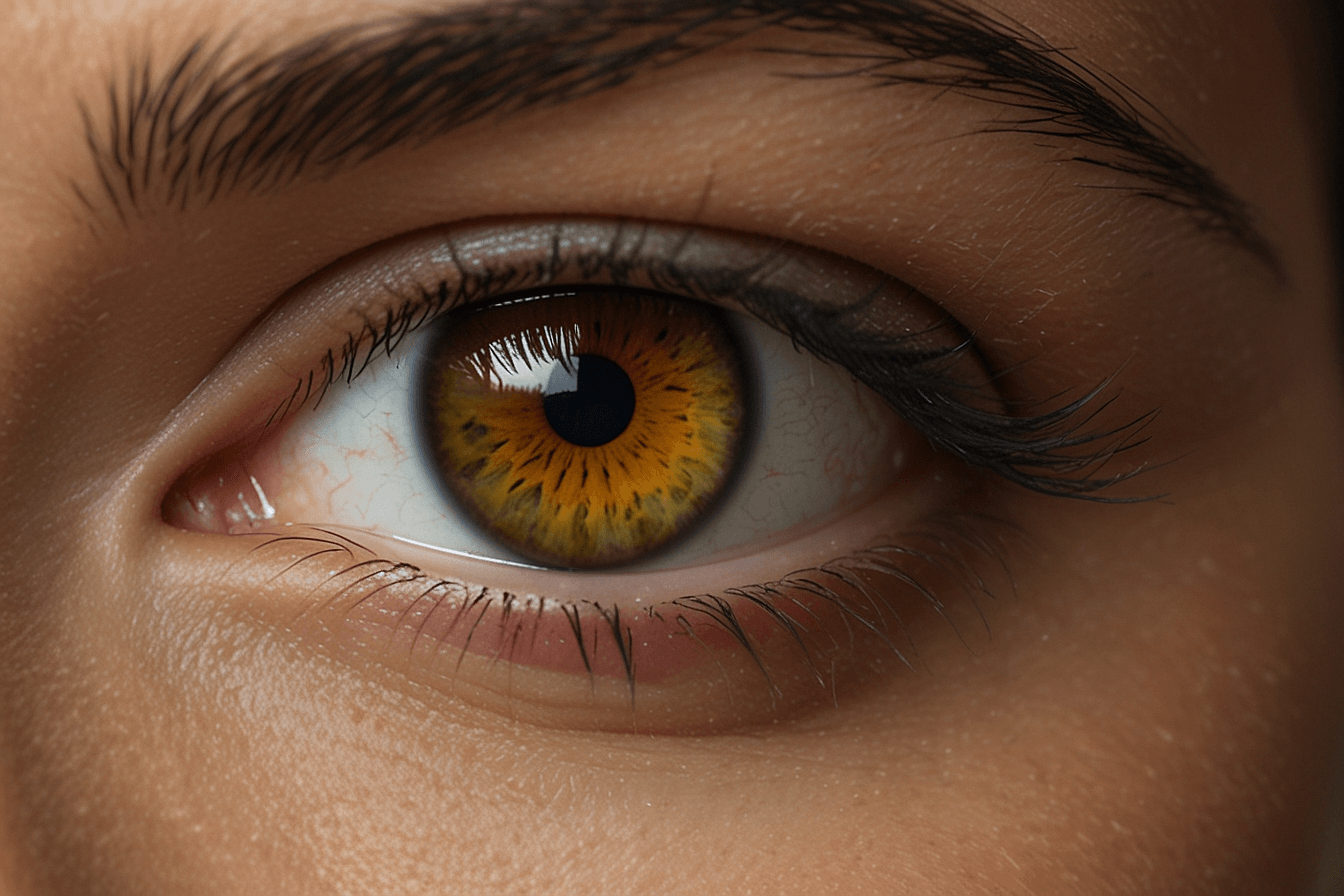Do you struggle with maintaining eye contact in conversations? Many find it uncomfortable but fear not – mastering this skill is easier than you think. By understanding the importance of eye contact and implementing simple techniques, you can exude confidence and build stronger connections effortlessly. Are you ready to unlock the power of effective eye contact?
Key Takeaways
- Understanding the reasons behind avoiding eye contact can help address the anxiety associated with it.
- Practicing eye contact in social interactions can improve communication and build rapport.
- Individuals with autism may experience challenges with eye contact, and understanding this can lead to more inclusive interactions.
- Unveiling the power of eye contact highlights its significance in conveying confidence and connection.
- Strategies for overcoming eye contact anxiety include gradual exposure and mindfulness techniques.
- Enhancing your eye contact skills through practice and self-awareness can boost your confidence in various social settings.
Understanding Eye Contact Anxiety

Signs
Recognize the signs of eye contact anxiety. Symptoms may include avoiding eye contact, feeling discomfort, or nervousness.
Eye contact anxiety can manifest in various ways, such as fidgeting, looking away frequently, or even sweating during conversations.
Social Interactions
Understand how eye contact anxiety can impact social interactions. It may lead to misunderstandings, lack of connection, or misinterpreting emotions.
Individuals experiencing eye contact anxiety might struggle to engage effectively in conversations or establish rapport with others.
Psychological Aspects
Learn about the psychological aspects of eye contact anxiety. It is often linked to self-esteem issues, social phobias, or past negative experiences.
Psychological counseling or therapy can help individuals address underlying causes and develop strategies to manage eye contact anxiety effectively.
Reasons Behind Avoiding Eye Contact
Shyness
Shyness often leads to avoiding eye contact due to self-consciousness and insecurity. Shy individuals may find direct eye contact intimidating.
Social Anxiety
Feeling nervous can make it hard to look someone in the eye. Anxiety can affect how well you hold eye contact. The fear of judgment or negative evaluation in social situations can cause discomfort, leading to avoidance.
Discomfort in the Spotlight
Feeling uncomfortable in the spotlight can also contribute to avoiding eye contact. When individuals feel exposed or vulnerable, they may avert their gaze to reduce feelings of vulnerability.
Eye Contact in Social Interactions

Impact on Communication
Eye contact is crucial for effective communication. When you maintain direct eye contact, it shows that you are attentive and engaged. This simple gesture can significantly enhance the quality of your conversations.
It’s important to strike a balance, as too much eye contact might make others uncomfortable. Focusing on the other person’s eyes conveys interest and respect in various situations.
Cultural Variances
Cultural norms play a significant role in the importance placed on eye contact. In some cultures, prolonged eye contact is seen as a sign of respect and attentiveness. However, in others, looking directly into someone’s eyes can be considered rude or aggressive.
Understanding these cultural differences is essential when interacting with strangers from diverse backgrounds. Adapting your level of eye contact based on cultural cues can help foster smoother and more harmonious social exchanges.
Confidence and Trust Perception
Maintaining eye contact can influence how others perceive your confidence and trustworthiness. When you hold someone’s gaze while speaking, it conveys self-assurance and conviction in your words.
Conversely, avoiding eye contact may signal insecurity or dishonesty. People tend to trust individuals who meet their gaze directly, as this signifies openness and transparency in communication.
The Impact of Autism on Eye Contact

Understanding Challenges
Autistic individuals may find eye contact difficult due to sensory overload during social interactions. This can lead to discomfort and anxiety.
Individuals with autism often experience hypersensitivity, which can make direct eye contact feel overwhelming. As a result, they may choose to avoid eye contact to reduce stress and anxiety. This coping mechanism is a common challenge faced by many individuals with the autism spectrum.
Strategies for Support
Creating a safe environment is crucial for autistic individuals. Providing alternatives, like looking at the mouth or forehead, can help ease discomfort.
Visual aids such as social stories or video modeling can gradually assist in teaching the importance of eye contact.
Benefits of Accommodations
Making accommodations for autistic individuals promotes inclusivity and enhances their comfort in social settings.
Supporting eye contact challenges fosters understanding and acceptance, creating a more inclusive environment for everyone involved.
Unveiling the Power of Eye Contact

Memory Retention
Eye contact plays a significant role in memory retention. Research has shown that our brains are more engaged when we make eye contact with someone. This heightened brain activity leads to better information retention.
When you look into someone’s eyes, your brain actively processes the visual information it receives. This engagement helps you store details about the person you are interacting with. For example, maintaining eye contact during a meeting can help you remember important points discussed.
Non-Verbal Communication
Much research has been conducted on the impact of eye contact on nonverbal communication. Eye contact is a powerful tool that conveys emotions and interest without the need for words. When you meet someone’s gaze, you show that you are attentive and engaged in the conversation.
Maintaining eye contact can also help in building rapport with others. In social interactions, making eye contact signals openness and confidence. It fosters a sense of connection between individuals, even without verbal communication.
Influence on Perceptions
The way we make eye contact can influence how others perceive us. Researchers have found that people who maintain good eye contact are often viewed as more trustworthy and confident. Looking directly at someone during a conversation demonstrates honesty and sincerity.
On the other hand, avoiding eye contact can be interpreted as shyness or lack of interest. In professional settings, making consistent eye contact during presentations or meetings can enhance your credibility and authority. It shows that you are attentive and focused on the discussion.
Strategies for Overcoming Eye Contact Anxiety

Cognitive Behavioral Therapy (CBT)
Cognitive Behavioral Therapy, known as CBT, is a type of therapy that helps individuals recognize and change negative thought patterns. It can effectively treat eye contact anxiety by addressing the underlying beliefs causing the discomfort.
CBT encourages individuals to challenge their irrational thoughts about eye contact and replace them with more realistic and positive beliefs. By working with a therapist, individuals can learn coping mechanisms to manage their anxiety effectively.
Gradual Exposure
Gradual exposure involves slowly increasing exposure to anxiety-inducing situations, such as making eye contact, in a controlled and supportive environment. This technique allows individuals to confront their fears gradually, building confidence over time.
By starting with brief and low-pressure interactions that involve eye contact, individuals can desensitize themselves to the anxiety triggers. Over time, they can work towards longer, more intense eye contact scenarios without feeling overwhelmed.
Deep Breathing Techniques
Deep breathing exercises are a simple yet powerful tool for managing anxiety during eye contact situations. Taking slow and deep breaths can help calm the body’s stress response and promote relaxation when faced with an anxiety-provoking moment.
Enhancing Your Eye Contact Skills
Practice Regularly
To improve your skills, practice maintaining eye contact with different people in various settings. Start with short intervals and gradually increase the duration.
Maintaining eye contact during conversations helps build trust and shows active engagement. Practicing regularly makes you more comfortable and confident in making eye contact.
Adjusting Your Gaze
Learn how to adjust your gaze to make eye contact feel more natural and less intimidating. Focus on the person’s eyes, but don’t stare intensely; soften your gaze.
Avoiding distractions around you can also help maintain better eye contact. Adjusting your gaze based on cultural norms and individual preferences is essential for effective communication.
Techniques for Improvement
Discover effective techniques for improving eye contact without feeling overwhelmed. One technique is the triangle method: briefly look at one eye, then the other, then the mouth.
Another technique is to focus on listening actively while making intermittent eye contact. This approach shows respect and interest in the speaker.
- Pros:
- Improved communication skills.
- Enhanced connection with others.
- Increased confidence in social interactions.
- Cons:
- Overly intense eye contact may come across as aggressive.
- Difficulty maintaining eye contact with certain individuals or in specific cultural contexts.
Remember that making appropriate eye contact varies among cultures and individuals. Understanding these differences can help you navigate social situations more effectively.
Practical Tips for Comfortable Eye Contact
Beginning of Conversations
Establish eye contact to show interest and build rapport with the other person when starting a conversation. This helps create a connection.
Maintaining eye contact from the start can make the interaction more engaging and effective. It sets a positive tone for the conversation.
50/70 Rule
Remember the 50/70 rule during conversations – maintain eye contact for about 50% of the time when speaking and 70% when listening.
This balance ensures you are attentive and engaged without making the other person uncomfortable.
Triangle Technique
Practice the triangle technique by alternating between eye contact, looking at the person’s mouth, and observing their eyebrows or forehead.
This technique helps break prolonged eye contact while showing attentiveness through facial expressions.
Seeking Support for Eye Contact Challenges
Mental Health Professionals
Contact mental health professionals if help is needed for severe eye contact challenges. They offer therapy and guidance.
Seeking help from experts can provide strategies for gradually improving eye contact skills. Therapists specialize in addressing social anxiety issues.
Resources Available
Explore various resources available online or in your community to aid with eye contact difficulties. Look for self-help books or online forums.
Support groups can be beneficial, offering a safe space to share experiences and learn from others facing similar challenges.
Professional Support Benefits
Professional support can help manage distress related to eye contact issues effectively. Therapists can identify underlying causes of discomfort.
Therapeutic interventions such as cognitive-behavioral therapy (CBT) can help individuals overcome their fear of making eye contact.
Final Remarks
Now that you’ve delved into the complexities of eye contact anxiety, understood the reasons behind avoiding it, and explored its impact on social interactions and on individuals with autism, you have gained valuable insights. By unveiling the power of eye contact and learning strategies to overcome anxiety, enhance your skills, and seek support, you can navigate this essential aspect of communication more comfortably. Remember, practice makes perfect. Embrace these practical tips and confidently step into social interactions, knowing that eye contact can strengthen connections and convey trust effectively.
Implement these strategies in your daily interactions to improve your communication skills. Start small, gradually challenging yourself to maintain eye contact for longer durations. Seek support from professionals or peers if needed. With persistence and patience, you’ll become more adept at using eye contact as a powerful tool in your social interactions.

